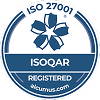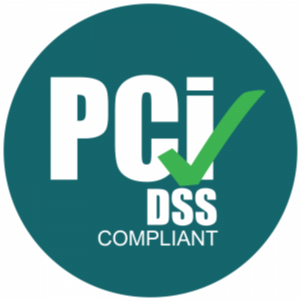Your team is always busy jumping from one call to the next, working on the details of a new project, or taking on just about anything that comes their way. But somehow the results don’t reflect. In fact, when it comes to key goals, productivity appears to be quite low – how is that possible?
Sometimes it isn’t about your team being overworked or understaffed, it’s about redirecting team efforts where it matters the most by providing them with the tools to optimize their time management skills.
After all, when your team has worked overtime for little to no valuable results, it isn’t just a loss for your business, it also impacts the teams’ spirit leading to disengagement, dissatisfaction, and low morale. Ultimately, this feeds into a never-ending cycle of frustration, low productivity, and stagnation. To break free from this and create a thriving workspace, this article delves into how you can align employee experience with time management skills, leading to business gains in productivity and engagement.
To better understand the power of time management, we will explore the cost of distraction, the benefits of focus, and the effectiveness of the Pareto Principle (the 80/20 rule) when it comes to unlocking workplace success.
Let’s focus: Setting the foundation for success
Did you know employees on average only manage 12 minutes of uninterrupted focus before being distracted, thereafter taking another 25 minutes to refocus? That’s a lot of lost productivity!
But it isn’t just about focus, it’s also about the tasks employees choose to focus on. When they do focus, they often do so on low priority tasks. Take this example: Lisa comes into office, fresh and ready to tackle the day. She spends the first 30 minutes replying to emails, followed by a series of daily meetings. She has checked off several tasks for the day, but right when she gets down to working on her key goals, she feels drained and more prone to distractions.
Work did get done, but it wasn’t the work that mattered the most. As it turns out, this is a common concern. The average employee spends 51% of their day on low-to-no value task!
The outcome? Employees feel like they are stuck in a Sisyphean struggle: constantly working for little to no results. These struggles can feel overwhelming, directly contributing to frustration and burnout. That’s why it’s important to give employees the tools to refocus their attention where it matters the most.
The cost of poor time management
Distraction doesn’t just sap efficiency, it destroys creativity, critical thinking, and even confidence. Moreover, distractions aren’t just frustrating for employees, they cost US businesses $588 billion each year!
This is because poor time management and lack of focus costs businesses in more ways than one. It goes beyond productivity, leading to inefficient workflows, lack of collaboration, impacted timelines, and ultimately, an underwhelming customer experience.
When faced with this, it’s easy to chalk it up to lack of efficiency on the employees’ part. But here’s the secret: the answer lies with the organizations themselves. It’s important to create a work environment that helps employees actively prioritize the right tasks, allowing them to be more productive and yield results.
After all, even the most talented employees will yield sub-par results if they are overburdened and under-focused. It’s up to you to ensure that your employees have the tools their need to drive success!
What is the 80/20 rule?
The 80/20 rule, also known as the Pareto Principle, suggests that 80% of the results come from 20% of the effort. In 1906, Italian economist Vilfredo Pareto noted that 80% of Italy’s land was owned by 20% of the population.
In the context of your workplace, however, this means that 80% of the output will be driven by 20% of the tasks. That’s why it’s important to focus your employees’ efforts where they matter the most.
While traditional time management is all about accomplishing the most number of things with the right organization skills, the Pareto Principle asks a different question: Which tasks actually matter?
Unlike traditional time management skills, the Pareto Principle asks you to:
- Focus on impact over output: Replying to emails and attending daily meetings does cross off several key tasks for the day (output) but these have low impact on key goals. Instead, but eliminating these, Lisa can focus her energy on what really matters (impact).
- Eliminate non-essential tasks: When you simply reshuffle the order of tasks, employees will continue to feel overwhelmed by everything on their plate. Instead, it’s important to eliminate things that don’t have the necessary impact, therefore taking things off the plate completely and allowing employees to focus on what really matters.
- Promote quality over quantity: It doesn’t matter how many meetings Lisa attended if she couldn’t work on her key tasks. That’s why the Pareto principle focuses on the quality of the work rather than the quantity of the tasks completed.
Understanding the Pareto Principle can change the way your workplace works! Instead of focusing on what’s urgent, employees can focus on what is most valuable.
The 80/20 rule in action
The Pareto Principle sounds great in theory, but how can you help your team get started?
- Audit the task list: Every task doesn’t contribute equally to success. To better understand what can be eliminated, you need to begin with a comprehensive view of all the tasks that are currently being addressed. Ask your team members to create a “Time Inventory” listing all the tasks they work on and the time each consumes.
- Prioritize ruthlessly: Once you’ve got the complete list, set up one-on-one meetings to identify the tasks that really matter. Show employees how 20% of the tasks they work on can deliver 80% of the value to help them prioritize better in the future as well!
- Eliminate or delegate: Some tasks just don’t contribute to the overall success of your organization. Consider this the spring cleaning your task list needs as you eliminate tasks that don’t add value. And if there are still tasks that matter, just not as much, consider delegating it to other team members or even automating them if possible, ensuring your top talent is focused on delivering real value.
- Review regularly: You can set up weekly or fortnightly reviews to ensure workflows remain optimized and efficiency is prioritized.
The power of the Pareto Principle
The Pareto Principle can transform the day-to-day workflows and processes and your workplace, improving the quality of output, employee engagement, and business growth.
Here are just a few examples of where it can be leveraged:
- Meeting management: By cutting back on 80% of the unnecessary meetings and instead only connecting for meaningful calls can reduce Zoom fatigue, giving employees their valuable time back to focus on critical thinking, ideation, and innovation to drive business success. After all, we all understand that more often than not, that meeting really could’ve been an email.
- Campaign planning: Instead of focusing on getting more campaigns out, focus on getting the right campaign out, and save time by automating the planning process via apps like Notion. The saved time and shorter task list can help your team focus their energy on creating captivating and engaging campaign concepts that would help you gain more leads in lesser time.
- Email planning: Instead of spamming multiple contact lists with a barrage of emails to ensure the success of an upcoming event, it’s important to focus your attention on the right target audience, creating specific communication that resonates. The outcome? Higher conversion rates of high-value prospects from a much smaller audience pool.
Once you understand the nuance of the Pareto principle, you can apply it to all aspects of your business to improve efficiency and transform processes.
Solutions that support
When your focus is optimizing tasks and creating seamless workflows, you need to build an environment that supports your employees to continue doing so. Creating an integrated ecosystem is just as important as the principle itself, and the right tools can help you achieve your goals with ease.
Here is everything you will need to get started:
- Task audit: Visualizing the complete list is easy when you have the right tools for it. Asana and monday.com are some of the top picks by employees as they look to get clarity and prioritize what needs to be done.
- Task delegation: Looking to hand off tasks that aren’t as important? Trello or Asana can help you with just that!
- Focus: Zone in on the most impactful tasks with deep work tools like Forest app, Pomofocus and more. These are a great way to minimize distractions and help you accomplish key tasks.
- Collaboration: When you’re working in a team, it’s important to work together. Apps like Slack and Microsoft Teams facilitate collaboration without chaos.
- Reviews and self-assessments: The key to the continuance of any process is regular check-ins to ensure everything is running smoothly. Sogolytics can help in capturing feedback, visualizing trends, and helping you to make data-backed decisions to maximize impact.
Mastering time: The employee advantage
Every little task can feel overwhelming if your list is unending. With the Pareto principle, your employees can finally be in charge of their time by focusing their efforts where it matters the most. As they become more involved in driving success, you will notice a distinct shift in the workplace culture.
- Better work-life balance: By eliminating 80% of the unnecessary tasks, your employees will no longer be at the mercy of a ticking clock. Instead, by focusing on the tasks that matter, they will also be able to have more time for family, wellness, and recharging, ensuring that they bring their best self to work every day.
- Reduced burnout: Now that the overwhelming task list is out of the way, employees can focus on tasks that truly yield results. This increases their sense of ownership and drive for success as they become more engaged and driven, directly battling burnout.
- Better career progression: When employees have more time to focus on development and growth, they can build skillsets that allow them to advance and contribute better to the organization.
- Increased autonomy and ownership: When employees are given the autonomy to succeed in their tasks while being supported by leadership teams, they also feel a sense of ownership to achieve more and do better.
Common pitfalls to avoid
In theory, the Pareto Principle sounds like the key to business success. However, there are some things you need to keep in mind:
- Endless to-do lists: Creating checklists is important. But too many checklists would defeat the purpose. That’s why it’s important to keep the task list brief and actionable.
- Confusing urgency with importance: Don’t just push a task to the top of the priority list because it needs to be done immediately. Evaluate its value compared to everything else and perhaps delegate it if that works better.
- Lack of leadership alignment: Make sure everyone is on board before you begin. Getting mixed signals from management can be the ultimate focus-disruptor, and it’s one that can be easily avoided.
- Too many tools: In the age of AI, there’s a tool for everything! But to think that you’d ever be concerned about too many tools sounds absurd, right? Unfortunately app fatigue is real, and having tools take over most tasks can seriously impact critical thinking skills and even lead to exhaustion while working on the simplest of tasks.
Metrics to measure success
You’ve taught your employees the Pareto Principle and have a process in place, but is it really working? Here’s how you can be alerted to red flags early on so you can address concerns and improve processes before they spiral out of control.
- Employee pulse surveys: Employee pulse surveys will help you stay in touch with prevailing sentiments. You can be alerted to burnout signals and identify employee concerns before it’s too late to take the necessary action.
- Project turnaround time: Are you noticing a sudden increase in turnaround times? Maybe it’s a one-off, or maybe new tasks have cropped up that need to be delegated or eliminated.
- Task completion rate: Are employees checking off the tasks on their lists in the given time, or are you noticing a slower completion rate? Use Asana to track whether the timelines are being met or not, and take a closer look if you notice any overarching patterns
- Self-reported productivity: Sometimes the best insights will come from your employees themselves. Better understand how you can support them with the help of employee feedback surveys, and self-assessments.
At the end of the day, your employees don’t need more hours in a day, they need your help in prioritizing what matters. With experience management solutions, you can tune in to what your employees are saying by filtering out the noise to clarify tasks, create actionable goals, encourage focus, and build a workplace culture that drives engagement.
Want to empower your employees to work smarter, not harder? You need to first understand what their key concerns are, and SogoEX can help! Find a time that works for you and we’ll be glad to make the most of it. 🙂














